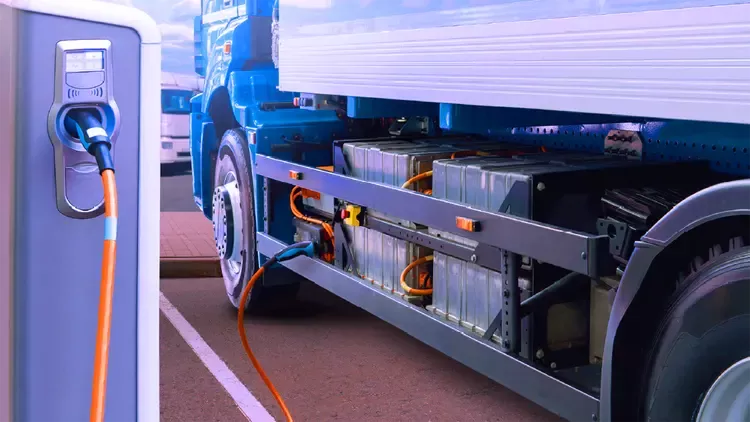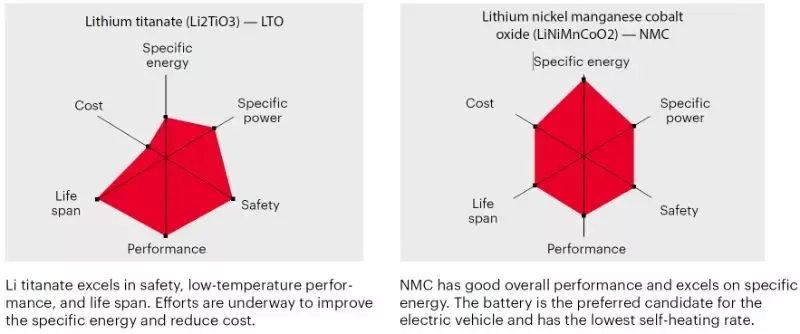Powering Up Electric Heavy-Duty Vehicles
By Hwee Yng Yeo
Published 05-24-23
Submitted by Keysight Technologies

Smokey tailpipe emissions may soon be a thing of the past, as the heavy transport vehicle market catches up with the electric car market to lower their contribution to greenhouse gas (GHG) emissions.
Private sedans and light-duty trucks lead the vehicle electrification race, leaving much upside opportunity for heavy transport fleets such as trucks and buses to catch up.
In the United States, data from the U.S. Environmental Protection Agency reveals that while overall GHG from passenger cars and light-duty trucks declined over the past decade, medium and heavy-duty trucks and buses still chugged out well over 200 teragrams of C02 over the same period (see Figure 1).
In Europe, the transportation industry must urgently decarbonize its trucks and buses to achieve the Paris Agreement target of keeping global warming below 2°C. Although these two heavy road vehicles represent only 2% of vehicles on the road, they emit a quarter of all transport-related GHG. That is according to a study by the non-profit research organization International Council on Clean Transportation.
These data points bode well for automakers who are investing in electrifying their heavy transport vehicle models to tap into the electric truck market growth. Worth only US$2.4 billion in 2022, this market is expected to surpass $15.6 billion by 2030, says a Precedence Research report.
While China takes the lead with the highest number of electric truck registrations globally, supported by a strong EV battery manufacturing industry, other regions are rapidly stepping up their learning curves.
![Figure 1. Bar chat of U.S. greenhouse gas emissions between 1990 and 2020 by land transport type. Note: 1 Teragram = 1 million metric tons. (Data source: Inventory of U.S. Greenhouse Gas Emissions and 1990–2020 [EPA 2022]](https://back.3blmedia.com/sites/default/files/inline-images/GHG%20Emissions_Keysight_041723.jpeg)
Longer range, faster charging, V2G-enabled
One of the biggest challenges in electrifying heavy vehicles is extending the driving range per hourly charge. Unlike designing passenger sedans, engineers working on the next electric truck model must ensure the battery has enough electric power to ferry heavy loads over longer distances. They also need to factor in fast-charging capabilities and future-proof these electrified fleets for a vital vehicle-to-grid (V2G) role, where EV batteries can serve as mobile power banks on wheels.
Meeting the needs for longer range, faster charging, and future-ready V2G capabilities starts at the battery cell chemistry level. Depending on the battery performance specifications, cell developers need to analyze how each electrochemical cocktail will perform (see examples in Figure 2).
EV battery cells come in different form factors: cylindrical, pouch and prismatic. These cells are connected to form modules and packs. An electric truck can have as many as 20,000 to 30,000 cylindrical cells organized into huge battery packs, with each pack weighing as much as a grand piano.
The different cell chemistries come with trade-offs in weight, capacity, performance, fast-charging capability, packaging, and recyclability. Some battery types require different battery management and thermal management systems, which may add cost and specific packaging requirements to the heavy vehicle. This is where testing at the battery module and pack levels is essential to ensure these heavy-duty electric fleets perform as expected, especially on long-haul journeys.

It is common for electrified heavy vehicles to use battery packs of 800 V and higher. Developing such powerful battery solutions can be costly due to energy consumption, cooling costs, and safety considerations.
This is where regenerative power and new wide bandgap (WBG) power semiconductors such as silicon carbide (SiC) chips enable more efficient battery testing technology. These WBG power devices reduce switching and conduction losses, improving thermal management.
Coupled with regenerative technology, the battery testing process can now recycle as much as 96% of the energy used in testing back to the grid instead of losing it as dissipated heat, which will incur immense air-conditioning cooling costs.
In the foreseeable future, electric transport fleets with high-capacity battery packs will play a key role in enabling the V2G vision.
These battery packs can alleviate concerns of insufficient battery energy storage systems as more renewable energy supplies from wind and solar connect to the grid. The batteries can store excess energy generated by renewable energy sources, and sink the electricity back to the power grid during peak power utilization periods.
The electrification of heavy vehicle fleets holds much potential to contribute to a cleaner transportation future, while helping to lower carbon emissions. Keysight is committed to helping automakers and battery manufacturers with their design and testing needs. Check out our available online resources or contact us to discuss your needs.

Keysight Technologies
Keysight Technologies
At Keysight (NYSE: KEYS), we inspire and empower innovators to bring world-changing technologies to life. As an S&P 500 company, we’re delivering market-leading design, emulation, and test solutions to help engineers develop and deploy faster, with less risk, throughout the entire product lifecycle. We’re a global innovation partner enabling customers in communications, industrial automation, aerospace and defense, automotive, semiconductor, and general electronics markets to accelerate innovation to connect and secure the world. Learn more at Keysight Newsroom and www.keysight.com.
More from Keysight Technologies

